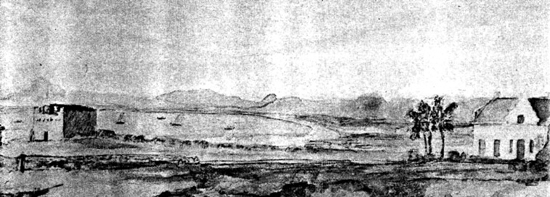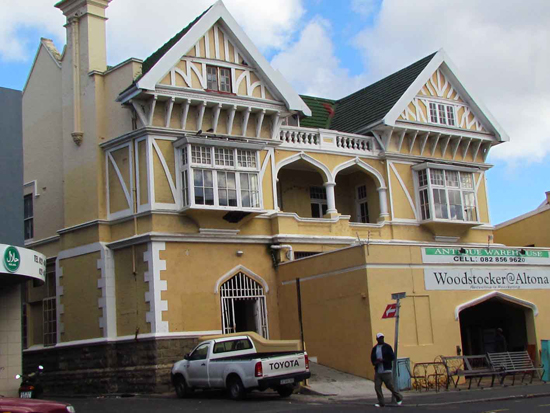In what is the first of 5 monthly installments, Jim Hislop gives us an overview of the different farms and estates that made up the Woodstock suburb starting with Zonnebloem, Leliebloem, Roodebloem, Eberstedt farm and the Treaty House (estate). First up is the Altona Farm.
The Altona farm
The Altona farm was one of the earliest estates below Devil’s Peak, and was eventually subdivided to create part of the modern suburb Woodstock. One of the old farm’s first recorded owners was an illiterate German immigrant, Gerrit Gerrits.
Gerrits was a soldier who originally came from Oldenburg, a town and small independent state situated between Bremen and East Friesland. After working as a knegt (farm labourer) for a year he became a free burgher in 1698 and was granted the farm Altona in 1706. After living and farming there for a few years, he sold Altona in 1714.
The farm appears (unmarked) on land surveyor Louis Michel Thibault’s map (from circa 1812) of the estates along Main Road, showing a large complex of buildings. These farm buildings may have stood at the bottom of Aberdeen Road, or in the vicinity of Railway Road, today a less desirable area, but once very close to the sea (before the foreshore reclamation of the 1930s), near Craig’s Tower, a defensive blockhouse built during the first British Occupation of the Cape in 1796.
English artist Sir John Barrow depicted the farm in a charming watercolour painted in the early nineteenth century. The fabulous farmhouse that can be seen in the painting was a fine thatched late 18th century homestead with attractive holbol (concave convex) gables, facing the sea and possibly incorporating Gerrits’s earlier, more simple dwelling.
By the mid-19th century, many old farms were already being subdivided, especially in Papendorp (Woodstock’s original name). Altona, which was then owned by Jan Diederiek Vos, was subdivided and nine plots were auctioned off. Another part of Altona between what is now Albert and Sir Lowry Roads, was subdivided by Hendrik Cloete (the owner of many properties in and around Cape Town) and sold off to create building plots for a new part of the growing suburb. That same year (1849), a list of properties that was published in the Cape Almanac, makes no mention of Altona house (it may already have been demolished or renamed at that time), though Hendrik Cloete’s home, Woodstock House, which stood near Searle Street is listed.
Unfortunately not a trace of the beautiful old Cape Dutch homestead survives today (it must have been one of the finest farmhouses between the Table Valley and Observatory), but the newly renovated Altona Hotel (196 Victoria Road, Woodstock) serves as a reminder of the old estate, as does Altona Grove nearby.
A charming Victorian building, the Altona Hotel houses an antique shop and stands on what was once part of Altona’s famlands.
Sources: www.e-family.co.za, www.woodstocker.co.za
For more on the history of Woodstock, click here.
Jim Hislop is the current Senior Copy Editor and Wine Writer for Pick n Pay’s Fresh Living magazine.
A long-time resident of Observatory, he is also a member of the Vernacular Society and is currently researching the history of the old farms of the Observatory and Woodstock area.






November 1st, 2011 at 5:04 pm
Hi Jim,
What a wonderful piece – for interest sake my great grandparents were married at Altona House. I have the marriage certificate and was researching it when I came across your site. My great grandfather was the personal valet to Cecil John Rhodes, his name being John Norris.
Again many thanks
denise
November 2nd, 2011 at 9:04 am
Dear Denise, thanks for your feedback. Interesting!
If you feel like sharing any information or anecdotes I’d love to hear from you on [email protected].
Regards
Jim
August 19th, 2014 at 10:59 am
My father told me that he used to dive off the old pier and swim to Woodstock beach. As a child I visited the power station which one can just see on the left of the picture of the beach in your article. Also in my possession is an old spoon which I was told came from the wrecked William Orange in that area, given to me by my grandmother who had lived in Maitland.
Super article.
Regards, Felicity